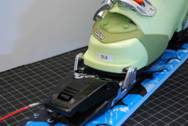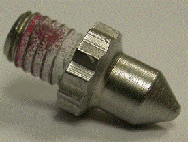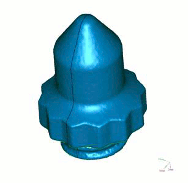Customer:

Genuine Guide Gear (G3)
Vancouver, British Columbia, Canada
Background:
G3, a leading-edge provider of outdoor equipment for backcountry enthusiasts and professionals, was devloping the company’s first alpine t ouring (AT) binding. Called the G3 Onyx, the binding is a lightweight, high-performance binding that can be easily switched between alpine skiing (the heel is held firmly in place) and touring modes (the heel is free to lift) without removing the ski boot from the binding.
ouring (AT) binding. Called the G3 Onyx, the binding is a lightweight, high-performance binding that can be easily switched between alpine skiing (the heel is held firmly in place) and touring modes (the heel is free to lift) without removing the ski boot from the binding.
Situation:
During design and development, G3 engineers encountered challenges with a small but critical part – a toe pin that interfaces between the binding and the boot’s toe and enables the skier to pivot the boot in the binding.
G3 needed to achieve consistency particularly in the release, as the binding is designed to meet international standards of release in both forward falling and lateral twisting. The toe pin was critical because inconsistencies in its interface with the binding would result in too much variability in the release, and could
cause the parts to wear prematurely.
However, traditional calipers and a coordinate measuring machine (CMM) were not able to provide precise enough data for the engineering team to stablize the toe pin design. The toe pin’s small size and complex shape – including a conical tip – made measurement difficult.
Solution:
The ShapeGrabber Ai310 3D Scanner was used to provide precise 3D scans of the boot pin. The required measurements included tip radius, cone angle, and a tangency to an accuracy of 0.1 degree. In addition, a variety of different pins were scanned and compared to understand why the parts were functioning 
differently despite appearing to be identical.
As a result of the information provided by the ShapeGrabber scans, G3’s engineers discovered that some small variations in just a few critical dimensions were impacting performance. The design was adjusted to achieve an improved fit that led to better function. And, the part’s tolerances were adjusted to ensure that it is always manufactured to the desirable range of function.
